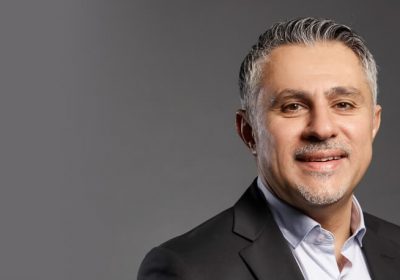
- Author: Nicole Madigan
- Posted: August 5, 2024
‘Boomers’ to ‘Zoomers’ > Thriving in a Multigenerational Workplace
Until President Joe Biden made his shock, albeit unsurprising, exit from the presidential race, aged 81, both contenders for America’s top job were aged over 75. And now, with Kamala Harris’ hat thrown squarely into the ring at age 59, the President-elect will either hold office in their 60s, or – if 78-year-old Trump wins — into their 80s.
The two contenders, with an age difference of almost 20 years, is a reflection of the world as it stands today, with multigenerational workplaces becoming increasingly common.
As Generation Z enters the workforce, an ageing population refuses to leave, or is unable to – meaning a workplace comprising of both 20 and 70-year-olds is increasingly standard.
Each generation brings pros and cons to an organisation — older employees may struggle to manage rapidly advancing technology, particularly within the finance sector, while younger workers can be difficult to manage, with many having started their careers during Covid, where flexibility and work-from-home options were the norm.
As our population continues to age, mangers will need to brace for the “silver tsunami”, and the associated cost and investment considerations.
The question is, is it something to fear or embrace?
CFO Magazines A/NZ’s Nicole Madigan speaks with three CFOs about their own workplaces, the impact of the ‘silver tsunami’ and what strategies have been put in place to combat potential challenges, and ensure valuable older workers are nurtured.

For Prabal Chatterjee, CFO of Emma and Tom’s, older workers are embraced, bringing diversity, experience and a wealth of knowledge to the company at large, and it is younger employees, ultimately enhancing morale and even job satisfaction.
“Implementing age-inclusive policies fosters a culture of fairness, equality, and respect across all age groups,” says Chatterjee.
That includes bridging the gap between the generations, both for employee satisfaction and development, and succession planning.
“A mentoring program has been implemented whereby senior employees are tagged with junior/less experienced employees for knowledge sharing and transfer of valuable institutional knowledge and expertise,” says Chatterjee.
“Succession planning at each level is done and reviewed annually to ensure that adequate skilled back-up is available for each senior positions.”
But with an ageing workforce comes a unique set of financial implications that impact short- and long-term financial planning and forecasting.
“As older employees retire, there’s a risk of losing valuable institutional knowledge and expertise. Therefore, succession planning becomes crucial, which may require additional investments in training and development,” Chatterjee says.
Long-term financial forecasts may need to be adjusted to account for changes in workforce demographics, retirement trends, and associated costs like training.
“As employees age, healthcare costs tend to rise due to higher rates of illness and medical needs. This needs to be factored in when performing financial planning.”
In addition to direct financial impacts such as increased sick/personal leave, increased risk of Workcover claims, training and development costs and retirement benefit provisions, an ageing workforce also brings indirect financial implications, such as costs relating to lower efficiency or productivity, and the risk of losing loyalty-based customers on retirement due to personal connections.
“Age-related health issues or reduced productivity among older workers can impact overall workforce efficiency,” Chatterjee says.
“Companies may need to invest in ergonomic accommodations, training programs to update skills, or flexible work arrangements to maintain productivity levels. This increases the effective cost/overheads of the business.”
Measures also need to be put in place, says Chatterjee, to ensure institutional knowledge is retained as older employees retire.
“Retaining institutional knowledge as older employees retire is crucial for maintaining continuity and sustaining effectiveness,” Some of the measures that can be implemented in this regard are:
- Mentorship and knowledge transfer programs
- Succession planning
- Robust process to document the standard operating procedures (This is critical!)
- Goods systems in place to ensure that processes are not dependent on person
- Robust investment in continuous development (Training etc)
- Implementing e-learning portals for knowledge sharing
Leveraging technology is an important part of supporting older workers. At Emma and Tom that includes the implementation of e-Learning platforms, data analytics and decision support systems. But there are associated costs to consider too, including providing training sessions and ongoing support to ensure older employees can effectively use technology.
“Leveraging technology strategically can create a supportive and inclusive environment where older employees can continue to contribute effectively to the organisation’s success.”
Compliance challenges also need to be considered, such as those relating to legislative changes, discrimination laws, or retirement benefits can introduce compliance challenges.
“Moreover, changes in government policies regarding pension regulations, such as adjustments to contribution limits, tax treatment, or retirement age eligibility, can affect pension liabilities.”
At Unilever, fostering a culture of diversity that includes a multigenerational workforce is considered a worthy investment, according to Interim Head of Finance and Financial Controller ANZ, Shihara Zafrullah.

Zafrullah says she believes age shouldn’t be a barrier to having fulfilling work or personal growth, and Unilever’s strategies reflect that.
“Our philosophy is to have a workforce that represents the diversity of our customers which means that as the shape of society changes, so does the workplace,” she says.
“One of our key strategies in creating an age-positive workplace is through our Future Fit plan, which equips our team members to upskill and reskill – no matter their age or what stage they are at in their careers,” she says.
“For example, we have a team member in our Research & Development team who is over 60 years of age, and as part of her Future Fit Plan, she has attended a number of courses to upskill in always-evolving technology, new methods of work and to stay digitally savvy.”
The organisation also invested in a program dubbed, Next Work, a new employment model giving team members the freedom and flexibility to reduce or increase their working hours at different stages in their lives.
“For example, we have a former full-time employee who is in his 60s who loves the flexibility of working on projects for Unilever while enjoying a more relaxed lifestyle. On average, he works three to four months per year on different projects that require his expertise, knowledge of internal processes and leadership.”
The company is also investing in creating a more menopause-friendly workplace, partnering with Australian consultancy Don’t Sweat, to do so.
“By tapping into multigenerational talent and skills, we can benefit from diverse thoughts and ideas, which is why we are looking at more ways and strategies to support and empower an ageing workforce.”
But an ageing workforce does come with some challenges. According to James Solomon, Global CFO of Xref, one of the biggest challenges is knowledge transfer.
“To combat knowledge transfer issues but to also train out younger staff we’ve looked at mentorship programs that allow our seasoned leaders to impart their knowledge to the next generation,” says Solomon.
Xref has also considered both direct and indirect costs of the silver tsunami on the company’s bottom line, adjusting its long-term financial planning to account for long service leave being taken, and therefore needing to hire staff to backfill for that period, or the payout of long service leave benefits.
“Another direct financial impact is higher salaries for experienced staff while indirect impacts involve costs associated with knowledge transfer programs.
“We’ve also increased our budget for technology training to support them where required (and), we’re implementing mentorship programs and creating detailed process documentation to retain institutional knowledge.
“Our financial planning now accounts for part-time positions and potential productivity changes due to flexible arrangements.”
To assess the impact of the ageing workforce the organisation’s finance department tracks age distribution, training completion rates and knowledge transfer effectiveness as key metrics.
At Puremedic Health, whose team is entirely remote, catering for an ageing workforce requires thinking outside the box to ensure older workers feel connected, despite working outside a traditional office environment.
“We’ve introduced technologies such as Slack and encourage ‘face to face’ video meetings rather than email or phone calls,” says CFO, Helen Lyon.

“This connection is especially important for our older team members whose careers were largely based in organisational settings where personal relationships and social skills were developed in person, very different to the tech reliant world we now live in.”
Lyon says the experience of older workers compliments the tech-savvy skills and ideas of younger team members.
“We’re in the health industry and we try to take support our employees and be flexible in our approach to work and life. Some of our team members have young kids, others have grandkids or ageing parents that need their help and we do our best to create an environment where all our team members of all ages feel supported and engaged.
“Keeping a team of remote workers connected, involves more than just technology. We just use technology to foster meaningful interactions and promote collaboration across age groups which leads to a better, more enriched work life for all our team.”
One thing’s for sure, the silver tsunami is coming, and CFOs must be ready – both for the investment required to retain valuable older workers, and to combat the added costs of ensuring they don’t get left behind.








